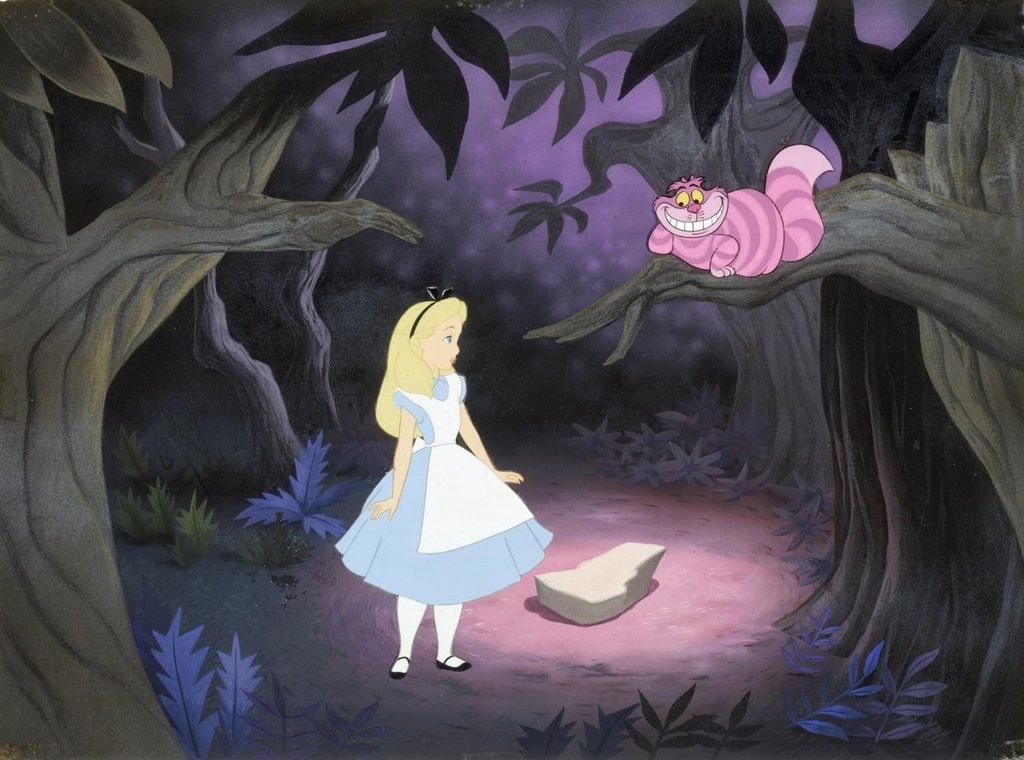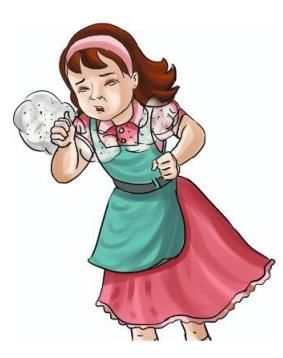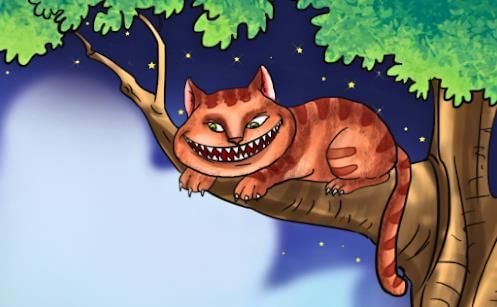Alice Meets the Cheshire Cat Chapter Notes | English Class 6 ICSE PDF Download
| Table of contents |

|
| Introduction |

|
| Key Points |

|
| Explanation |

|
| Message |

|
Introduction
The chapter "Alice Meets the Cheshire Cat" by Lewis Carroll follows Alice as she enters a magical world called Wonderland after getting bored with dull books and following a White Rabbit. In this strange place, she meets unusual characters like the Duchess and the Cheshire Cat. The story shows her adventures in a smoky kitchen, her conversations with the odd cat, and her journey toward other strange figures. It explores her reactions to the weird behaviors around her and teaches her to adapt to this new world.

Key Points
This story is about Alice, who follows a White Rabbit wearing a waistcoat down a rabbit hole, landing in the peculiar world of Wonderland.
- She enters a smoky kitchen where the Duchess sits on a stool holding a sneezing baby while a cook stirs pepper-filled soup.
- The pepper in the air causes everyone to sneeze except for the cook and a grinning Cheshire Cat by the fire.
- Alice, feeling shy, asks why the cat grins, and the Duchess explains it’s a Cheshire Cat and calls her baby "Pig" loudly.
- The Duchess’s harsh tone upsets Alice, so she tries to change the conversation to avoid further rudeness.
- The baby transforms into a pig and runs off into the woods as the Duchess leaves to play croquet.
- Alice meets the Cheshire Cat again, perched on a tree branch, and asks which path she should take.
- The Cat explains that the path depends on her destination, and any path works if she walks long enough.
- The Cat describes a Hatter and a March Hare, both mad, and claims everyone in Wonderland, including Alice, is mad.
- The Cat justifies its madness by saying it growls when pleased and wags its tail when angry, unlike a dog.
- Alice insists the sound is purring, not growling, and learns the Cat will attend a croquet game with the Queen.
- The Cat vanishes and reappears to ask about the baby, which Alice confirms turned into a pig.
- The Cat disappears slowly, leaving its grin behind, which amazes Alice.
- Alice heads toward the March Hare’s house, noticing its ear-shaped chimneys and fur roof, feeling nervous about its madness.
Explanation
Alice’s adventure begins when she grows tired of books without pictures and follows a White Rabbit in a waistcoat down a rabbit hole, arriving in the unusual world of Wonderland. Her first stop is a large, smoky kitchen where the Duchess is seated on a three-legged stool, holding a baby that sneezes and cries because of the peppery soup the cook is stirring.

The air is so full of pepper that Alice and the Duchess sneeze too, but the cook and a big Cheshire Cat sitting by the fire do not. Feeling a bit shy about speaking first, Alice asks why the cat grins. The Duchess replies it’s a Cheshire Cat and that’s why it grins, then suddenly shouts "Pig!" at the baby, startling Alice.
Alice realizes it’s not directed at her and continues, saying she didn’t know cats could grin. The Duchess rudely says Alice doesn’t know much, which offends her, so she tries to talk about something else. Later, after more strange events, the Duchess leaves to play croquet, and the baby, left with Alice, turns into a pig and trots into the woods.
Alice reflects on this odd change and spots the Cheshire Cat again, now on a tree branch. She asks which way to go, and the Cat responds that it depends on her destination. If she doesn’t care where she ends up, any path will do as long as she walks long enough. The Cat then points out a Hatter in one direction and a March Hare in another, saying both are mad.
When Alice says she doesn’t want to meet mad people, the Cat insists everyone there, including her, is mad because she came to Wonderland. To prove its own madness, the Cat compares itself to a dog, saying dogs growl when angry and wag their tails when pleased, while it does the opposite—growling when pleased and wagging its tail when angry.

Alice corrects it, calling the sound purring, not growling. The Cat invites her to play croquet with the Queen, even though she hasn’t been invited, and vanishes. It reappears to ask what happened to the baby, and Alice calmly says it became a pig. The Cat vanishes again, and Alice waits, expecting it to return. When it doesn’t, she decides to visit the March Hare, thinking it might be less mad since it’s May, not March.
As she walks, the Cat reappears, asking if she said "pig" or "fig," and Alice clarifies it was "pig," asking it to stop vanishing so suddenly because it makes her dizzy. The Cat agrees and vanishes slowly, starting with its tail and leaving its grin last. Alice finds this very curious. Soon, she sees the March Hare’s house with chimneys like ears and a fur-thatched roof, approaching timidly and wishing she had chosen the Hatter instead, fearing the Hare might be too mad.
Message
The chapter teaches that being different or acting strangely might not be a bad thing but could be a new way of thinking. Alice learns to accept the unusual behaviors in Wonderland and keeps her curiosity alive despite feeling unsure. It also suggests that everyone has their own special way of looking at the world, and being open to these differences can lead to interesting experiences.
New Words with Meanings
- Cauldron: A large deep pot used for boiling liquids or cooking food over an open fire.
- Cheshire: A county in England, famous for the saying "grinning like a Cheshire cat."
- Croquet: A game played on grass where players hit wooden balls through hoops with a large wooden hammer.
- Hatter: A person who makes and sells hats; "mad as a hatter" means someone seems crazy in a fun way.
- March Hare: A hare known for wild behavior during its breeding season in March.
- Grant that: To agree that something is true.
- Giddy: Feeling dizzy or lightheaded.
|
38 docs|19 tests
|
FAQs on Alice Meets the Cheshire Cat Chapter Notes - English Class 6 ICSE
| 1. What is the significance of the Cheshire Cat in Alice's Adventures in Wonderland? |  |
| 2. How does the encounter with the Cheshire Cat illustrate the themes of identity and perspective? |  |
| 3. What role does the Cheshire Cat play in guiding Alice through Wonderland? |  |
| 4. How does the Cheshire Cat's smile contribute to its character and the overall atmosphere of the story? |  |
| 5. What literary techniques are used in the portrayal of the Cheshire Cat in the story? |  |




















